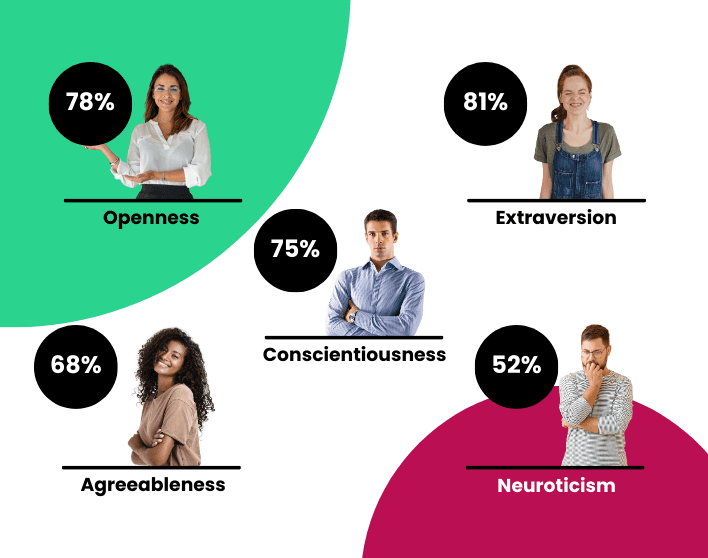The Bryq Team
HR Experts
Six months ago, quiet quitting took the world of work by storm. It caused a shift in how millions of employees executed their jobs and made others re-evaluate work’s role in their lives. Since then, #bareminimummondays has taken center stage as the latest workplace culture phenomenon. Unlike quiet quitting, its name describes exactly what it entails: doing the bare minimum at work, every Monday. To employees dealing with chronic stress, quiet quitting and bare mininum Mondays have served as accessible coping mechanisms. But don’t employees deserve more?The rise of two self-soothing, stress-reducing workplace trends in less than one year says a lot about the state of work. It sends a message to businesses around the world that employees are stressed. If gone unchecked, chronic stress is known to result in burnout and have damaging effects on one’s overall health and well-being. With the hope that awareness brings solutions, this month we invite you to join Bryq in recognizing April as National Stress Awareness Month. Healthy, happy employees often lead to more stable and prosperous businesses. Thus, there's no better time than the present to begin combatting this issue within your workplace.
For more on what you can do to care for the health of your workplace, continue reading the Bryq blog below. There, we explore the various causes of work-related stress and outline initiatives companies can employ to prevent it.
Stress at Work
It’s no secret that work is one of the most common sources of stress in one’s life. Before we explore the causes, impact and solutions to stress at work, it’s important for us to define exactly what stress entails. The American Psychological Association defines stress as “a normal reaction to everyday pressures but can become unhealthy when it upsets your day-to-day functioning.” The American Center for Disease Control and Prevention (CDC) puts it into further perspective by describing job stress as “the harmful physical and emotional responses that occur when the requirements of the job do not match the capabilities, resources, or needs of the worker.” Though with 83% of US workers suffering from job stress and 25% claiming their jobs as their number one stressor, we doubt that the issue stems from a lack of competency. On the contrary, widespread negligence of resources and unmet employee needs seem to play a major role.This abundance of job stress is not the only thing that should be on employers' minds. The intensity of stress felt by workers needs to be considered too. When asked about the severity of stress, 73% of workers across the U.S. and Europe rated their job stress as “moderate to high.” The gravity of the stress epidemic sinks in as data shows that nearly 34% of workers experience signs of burnout. With these statistics in mind, it's no wonder that quiet quitting and bare minimum Mondays are on the rise.
Its Causes
While mild feelings of stress are a normal by-product of work, unprecedented events in recent years have raised employee stress levels from mild to extreme. Nearly half of all workers featured in a recent EU study claim their work-related stress increased as a result of the COVID-19 pandemic. Unforeseen disruptions due to COVID-19, alongside economic uncertainty, has largely impacted where, when, with whom, and how we conduct business in our daily lives. When we deep dive into what causes extreme job stress, we find one common pattern: workers feel they have little control over seemingly endless demands. Long working hours, work overload, and a lack of work-life balance were listed as the top causes. These feelings are only intensified in workplaces with minimal recognition, employee appreciation, and guidance from management.
Its Impact
When on the clock, workers with chronic job stress see a decrease in engagement and an increased interest in exploring other employment opportunities. The effects of stress at work don’t end there. For many employees, work-related stress follows them home and impacts their personal lives. Outside of the office, stressed employees report trouble sleeping, balancing personal relationships and even managing their emotions, while a recent report revealed as many as 21% of UK workers called out sick due to stress. Such adverse effects signal loudly and clearly that it is time for change.
Solutions
Employees deserve to feel happy, healthy and engaged at work. It's business leaders' responsibility to build an environment that supports that. Things like quiet quitting, bare minimum Mondays, and burnout shouldn't be treated as work-ethic issues but as cultural ones. While it's true that job stress cannot be fully eradicated, adopting a more human company culture can greatly minimize it. For inspiration, try putting a few of these stress-reducing cultural practices to use:
Implement a Flexible Work Model , Whether that means adopting a fully remote or a hybrid work model, this practice allows employees to reduce hours dedicated to a stress-inducing commute. While true that disruptions in the traditional work model caused many workers stress in the early days of the pandemic, more recent studies show positive effects of the flexibility remote and hybrid models offer.
Practice Prioritization , Nearly 75% of workers cite unrealistic workloads as a primary cause of job stress. It's time that the global workplace puts the wellbeing of employees at the heart of its business strategy. Business leaders can avoid overwhelming workers by ranking work-related tasks by priorities and setting realistic expectations.
Invest in Learning and Development , A lack of managerial support, a lack of training in preparation for a new role and a lack of opportunity for growth are cited as causes of work-related stress. All three can be solved by adopting a culture that supports the learning and development of staff at all levels. While also priming employees for upward, internal mobility.
Provide Health and Wellness Services , This benefit could include access to mental health professionals, career coaches, or even fitness reimbursement programs. While these services may not treat work-related stress at the source, they certainly provide tools for healthy stress management.
Overall, it's time for businesses to see and support workers for who they are as people - not simply for the work they do as employees. The health of a company’s employees and the success of its business rely on it.
Ready to reduce work-related stress, invest in culture and reap positive returns? Download Bryq’s Big Culture ebook for an in-depth guide on how to create a positive workplace culture from start to finish.








